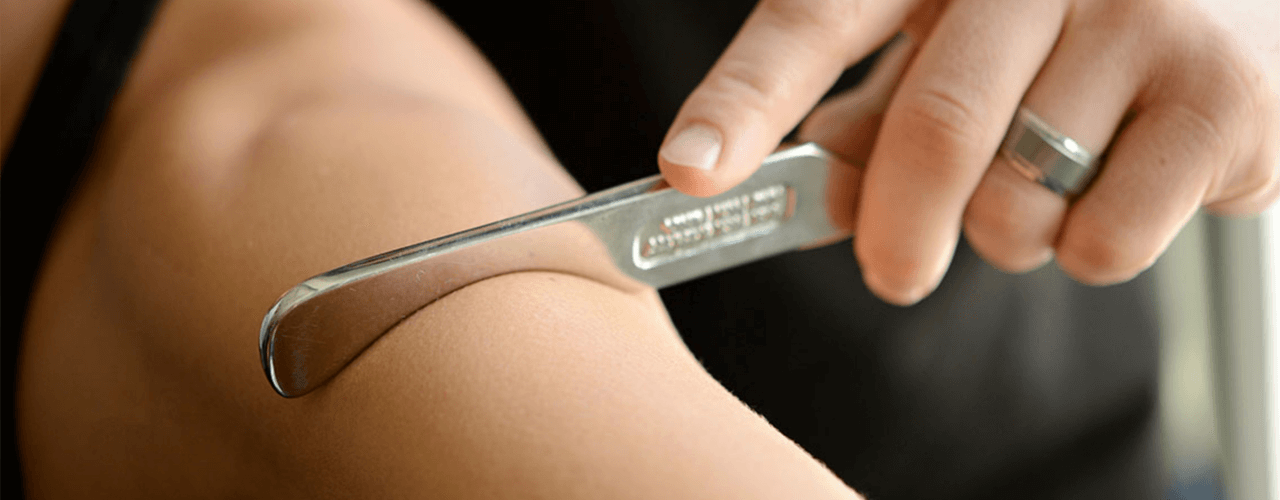Instrument Assisted Soft-Tissue Mobilization
Instrument assisted soft-tissue mobilization (IASTM) is a great service that we offer our patients, especially those dealing with soft tissue injuries. IASTM allows us to detect and treat areas where muscles, tendons, and ligaments have become damaged from an injury, muscle imbalance, faulty movement pattern, or overuse. In these situations, the body has created scar tissue or adhesions as part of the healing process.
This scar tissue that forms on the inside is very similar to a scar that would form on the skin from a cut or abrasion. As you can imagine, this healing area is not quite as strong or flexible as normal, healthy soft tissue. If this area of dysfunction is allowed to build up and does not heal, this area can become painful due to the lack of strength and flexibility. In some areas of the body, such as the shoulder, elbow, or wrist, these adhesions can also become large enough to compress a nerve and cause a nerve entrapment, which can lead to greater pain and dysfunction if not properly managed.
IASTM allows us to identify and treat these adhesive areas using a fine-edged stainless steel tool, which we use to glide along the skin in the areas of the damaged muscle, tendon, or ligament. The tool kind of works line ironing a piece of wrinkled clothing. First, we use the tool to detect an adhesion under the skin. Then we use a gentle gliding motion to repeatedly pass the tool over the damaged area, which will help break up the adhesion.
Treating the damaged tissue in an active manner also helps speed up the healing process. While treating a particular area, we might have the patient stretch, move, or rotate the area of concern. While treating the tissue during an active movement, we can work on improving function of the area and break up adhesions simultaneously. If the scar tissue or muscle adhesion is formed in an area that may cause a nerve entrapment, specific exercises can be done during treatment to move, or “floss,” the nerve through the entrapped area, reducing the compression on that nerve.
So how does it work? There are a number of benefits for IASTM. First and foremost, the repetitive gliding motion of the tool over the skin helps break up scar tissue and muscle adhesions that have formed in the damaged tissue. The treatment also increases blood flow to the affected area, which brings more nutrients to help heal the injury. Typically when the treatment is applied, the skin will turn red in the treatment area as a result of this increased blood flow. This can sometimes result in a light bruise, but should not be a cause of concern. Finally, the repetitive movement helps stimulate cells in the area to replicate and reproduce new, healthy cells to help recover from the injury.
IASTM can be used to treat a variety of conditions, including tendonitis, ligaments sprains, muscle strains, carpal tunnel syndrome, epicondylitis, neck pain, plantar fasciitis, IT band syndrome, low back pain, and post-surgical rehabilitation. If you or a loved one have any of these conditions, ask how we can help!
Yours in Health, Dr. Alex

